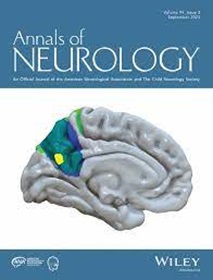Association that Neuroimaging and Clinical Measures Have with Change in Arm Impairment in a Phase 3 Stroke Recovery Trial
Abstract
Objective
Vagus nerve stimulation (VNS) paired with rehabilitation therapy improved motor status compared to rehabilitation alone in the phase III VNS-REHAB stroke trial, but treatment response was variable and not associated with any clinical measures acquired at baseline, such as age or side of paresis. We hypothesized that neuroimaging measures would be associated with treatment-related gains, examining performance of regional injury measures versus global brain health measures in parallel with clinical measures.
Methods
Baseline magnetic resonance imaging (MRI) scans in the VNS-REHAB trial were used to derive regional injury measures (extent of injury to corticospinal tract, the primary regional measure; plus extent of injury to precentral gyrus and postcentral gyrus; lesion volume; and lesion topography) and global brain health measures (degree of white matter hyperintensities, the primary global brain measure; plus volumes of cerebrospinal fluid, cortical gray matter, white matter, each thalamus, and total brain). Eight clinical measures assessed at baseline were also evaluated (treatment group, age, race, gender, paretic side, pre-stroke dominant hand, time since stroke, and baseline Fugl-Meyer upper extremity score). Bivariate analyses compared each measure with the primary trial end point (change in Fugl-Meyer upper extremity score from baseline to end of 6 weeks of treatment) across all subjects, with secondary analyses examining trial groups separately.
Results
MRIs were available from 80 patients (age = 59.8 ± 9.5 years, 29 women). Across all patients, less white matter hyperintensities (r = −0.25, p = 0.028) at baseline was associated with larger Fugl-Meyer score change. In the VNS group, less white matter hyperintensities (r = −0.37, p = 0.018) and larger ipsilesional thalamus volume (r = 0.33, p = 0.046) were each associated with larger Fugl-Meyer score change. Analysis of covariance (ANCOVA) analyses tested the interaction that each baseline measure had with treatment group and found that the model examining white matter hyperintensities had a significant interaction term, indicating 2.3 less change in Fugl-Meyer Upper Extremity (FM-UE) points in the VNS group relative to the control group for each point increase in modified Fazekas scale.
Interpretation
Neuroimaging measures are associated with extent of gains on the primary endpoint of a phase III stroke recovery trial. Among the neuroimaging measures examined, a measure of global brain health (extent of white matter hyperintensities) was better at explaining the change in arm impairment as compared with measures of regional injury; this was true when examining all study subjects as well as only those in the VNS group and is consistent with the global mechanism of action that VNS has throughout the cerebrum. Future studies can evaluate additional measures that further predict response to VNS therapy. The current findings suggest that individual patient neuroimaging results may be useful for a personalized medicine approach to stroke recovery therapeutics. ANN NEUROL 2025;97:709–719

 求助内容:
求助内容: 应助结果提醒方式:
应助结果提醒方式:


